Ray tracing is a technique for rendering 3D graphics by simulating the path of light in a scene. It works by casting rays from the viewpoint into the scene and recursively tracing the interactions of the rays with surfaces to determine what is visible. This allows for realistic lighting effects like reflections, refractions, and shadows. The core algorithm works by casting rays for each pixel to calculate the color based on ray intersections with objects, shadows, and simulating effects like reflection and refraction through recursive ray tracing.
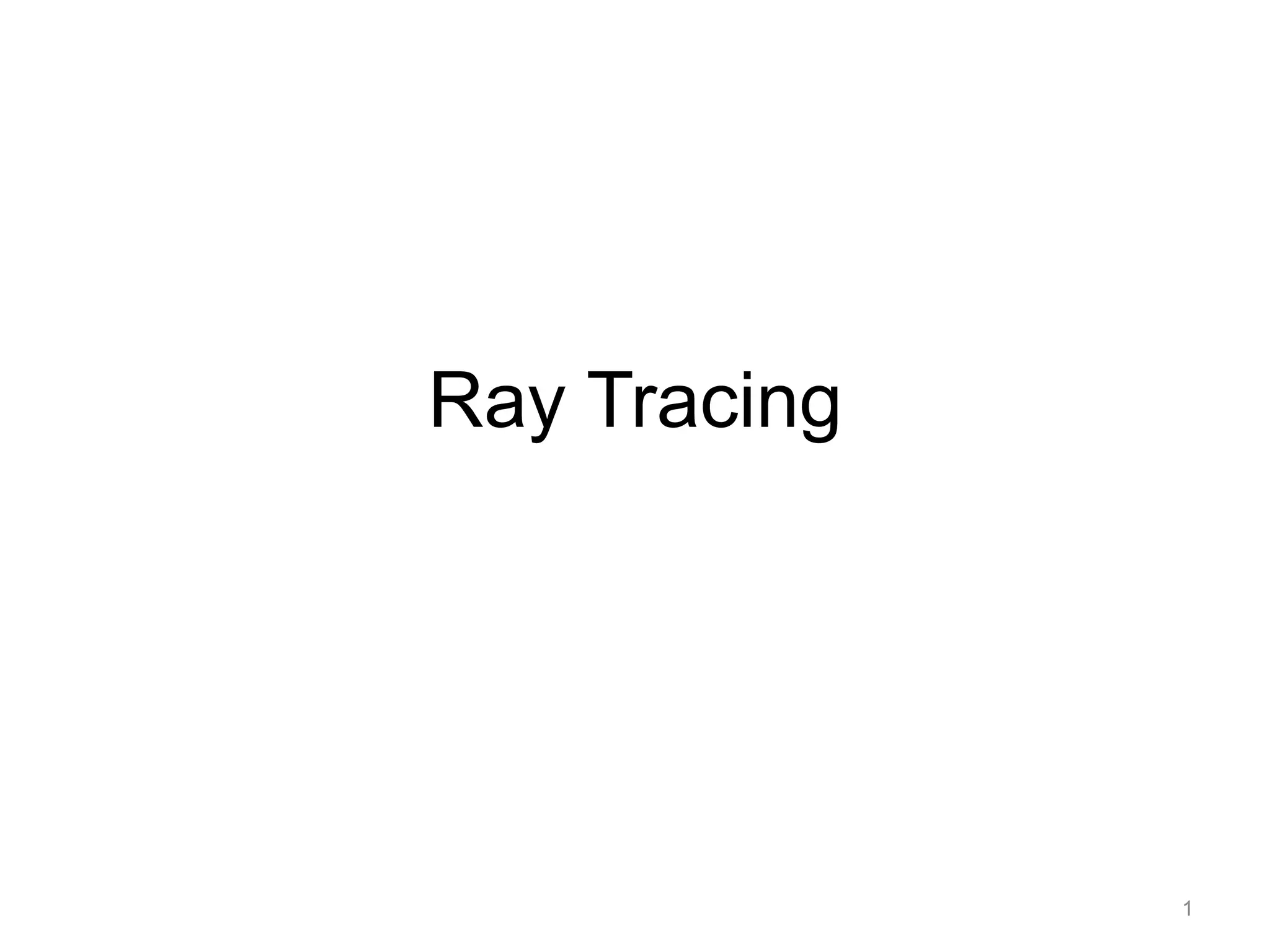
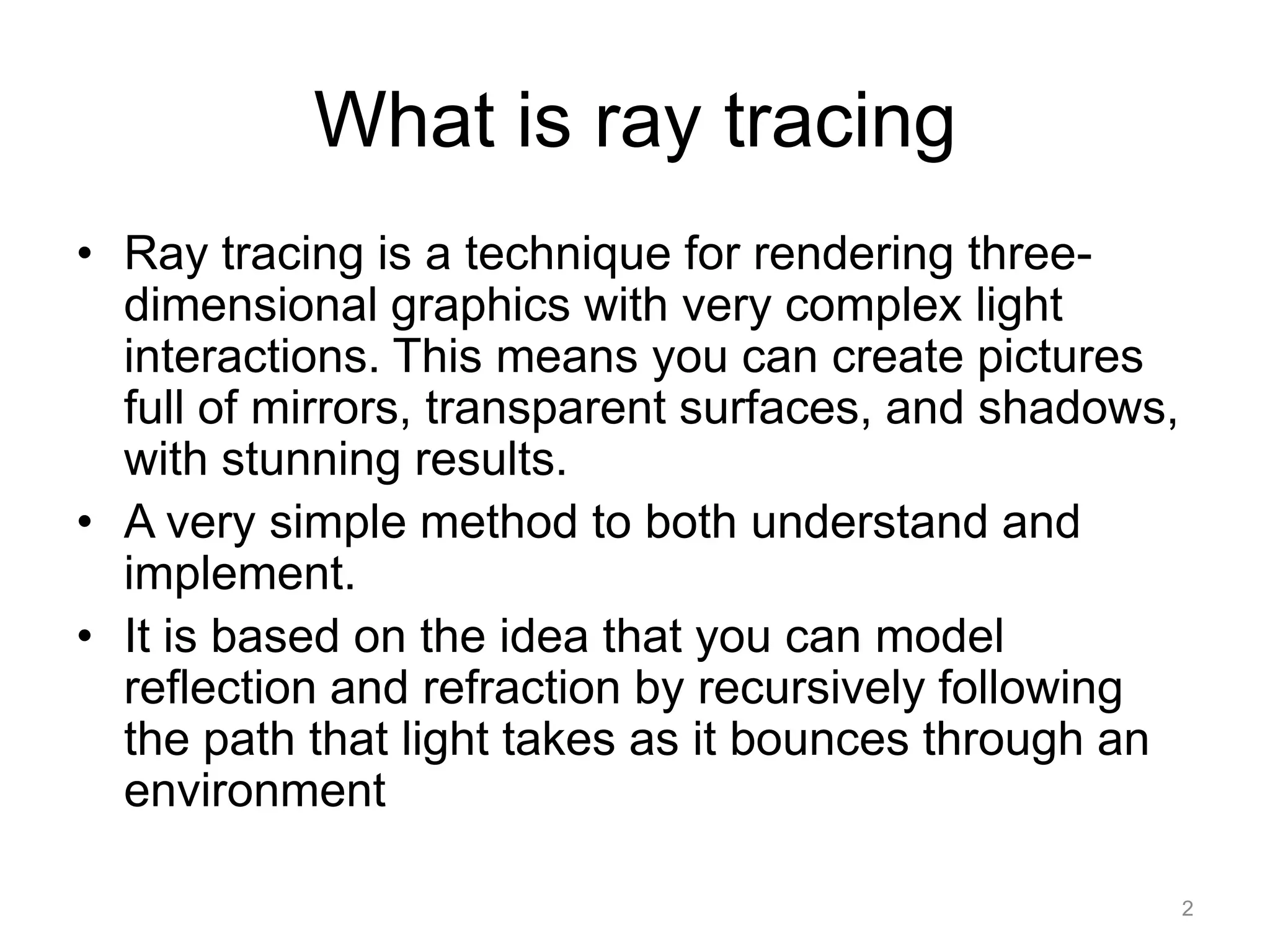
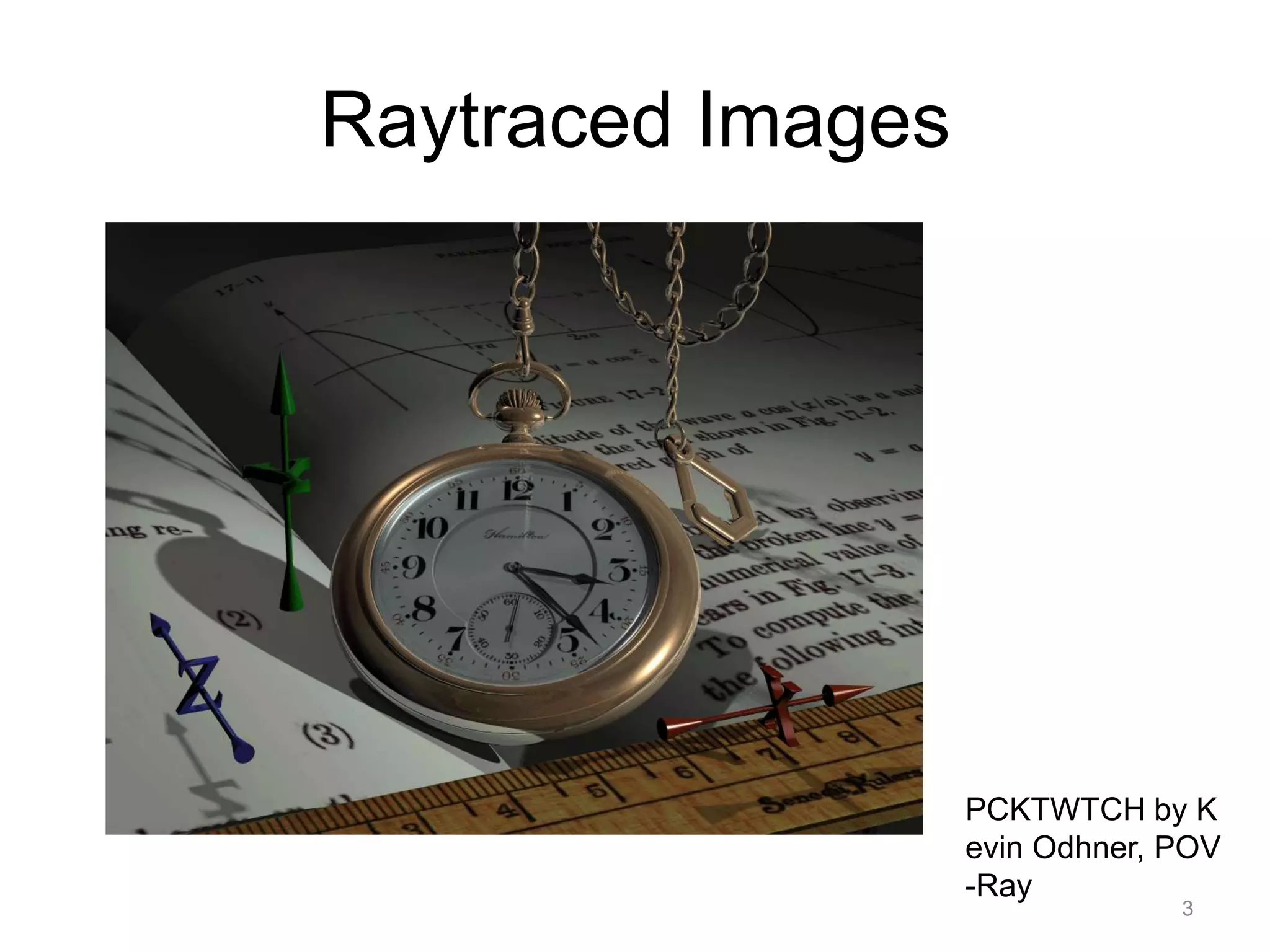


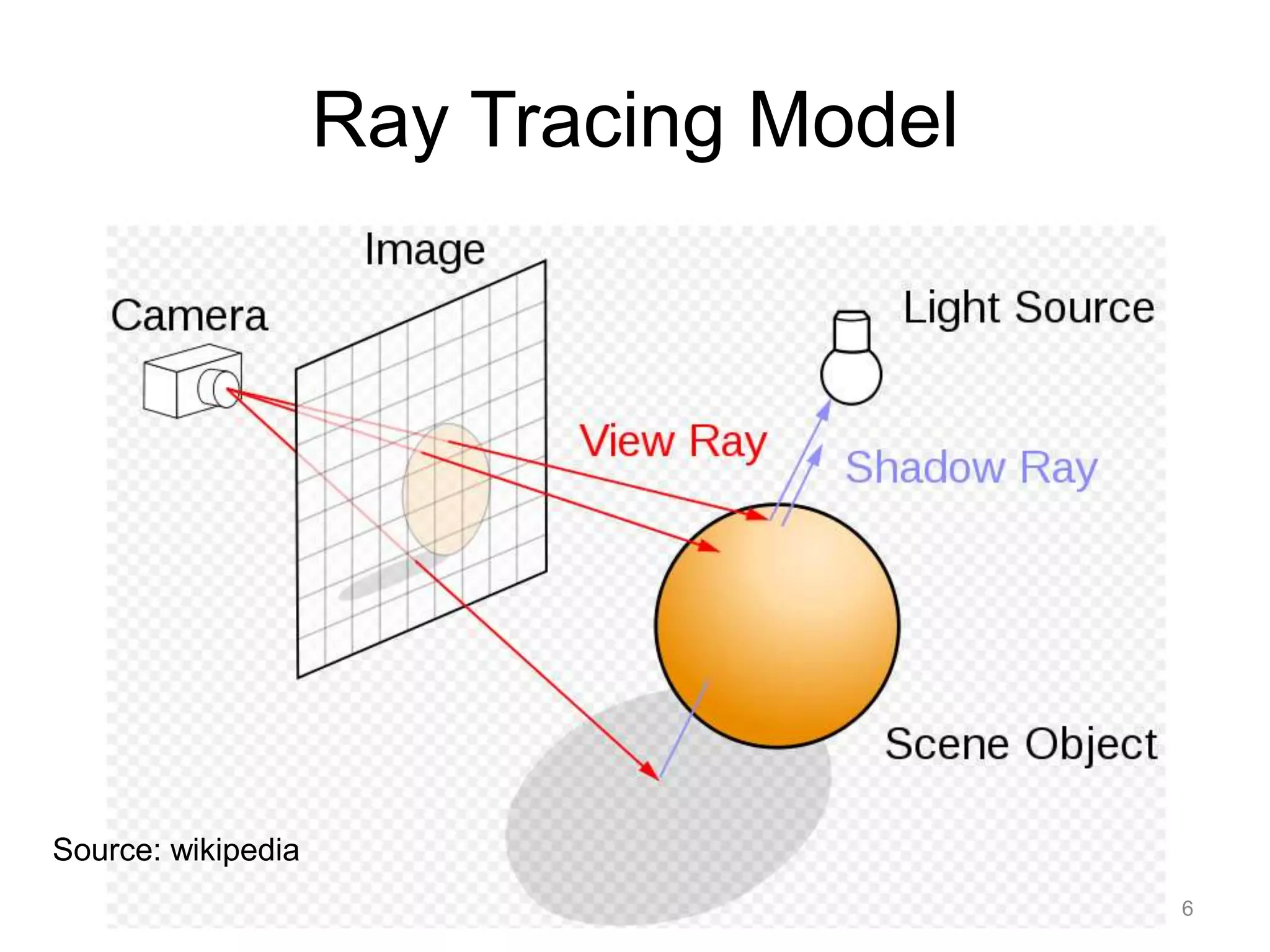

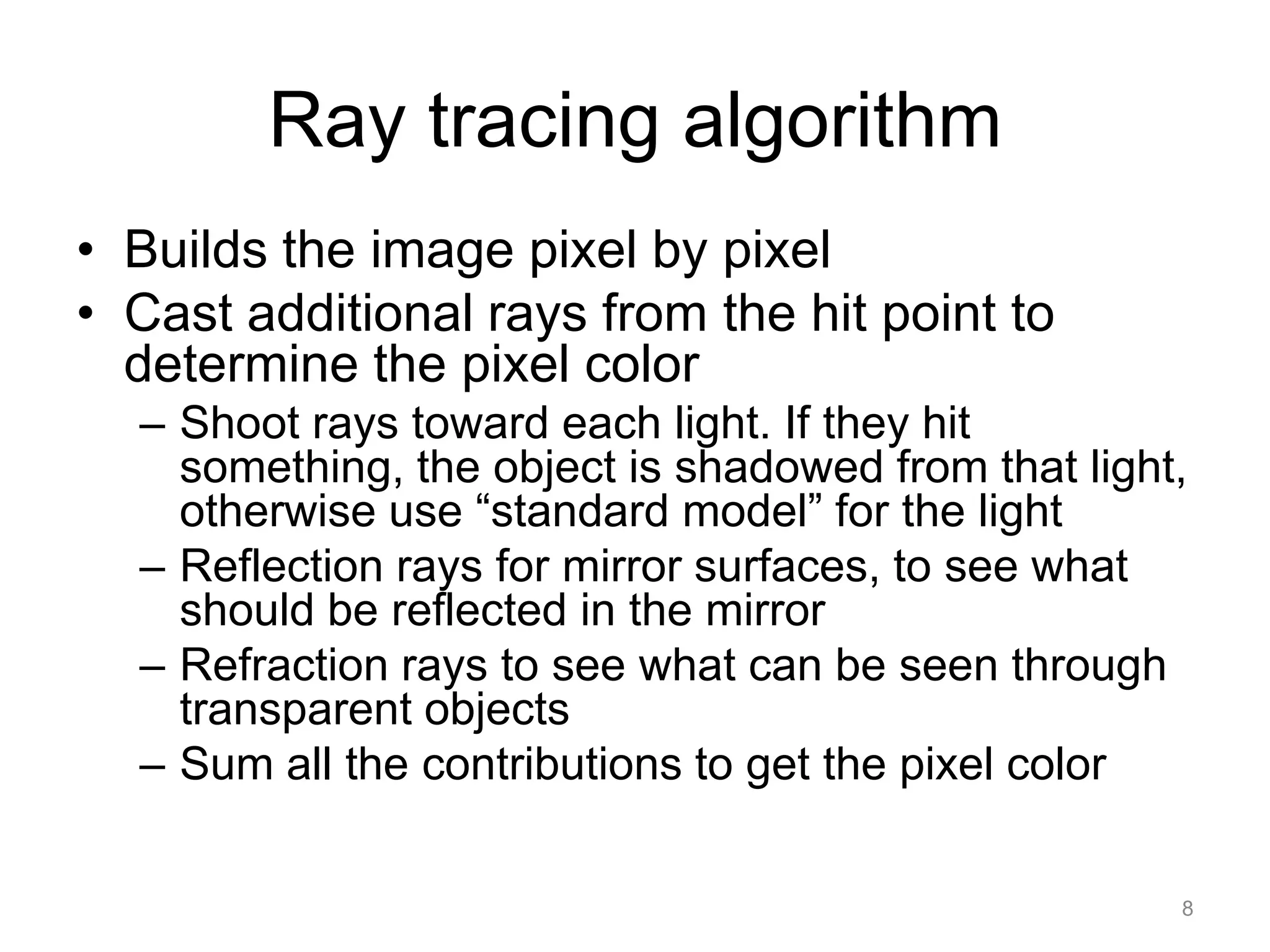
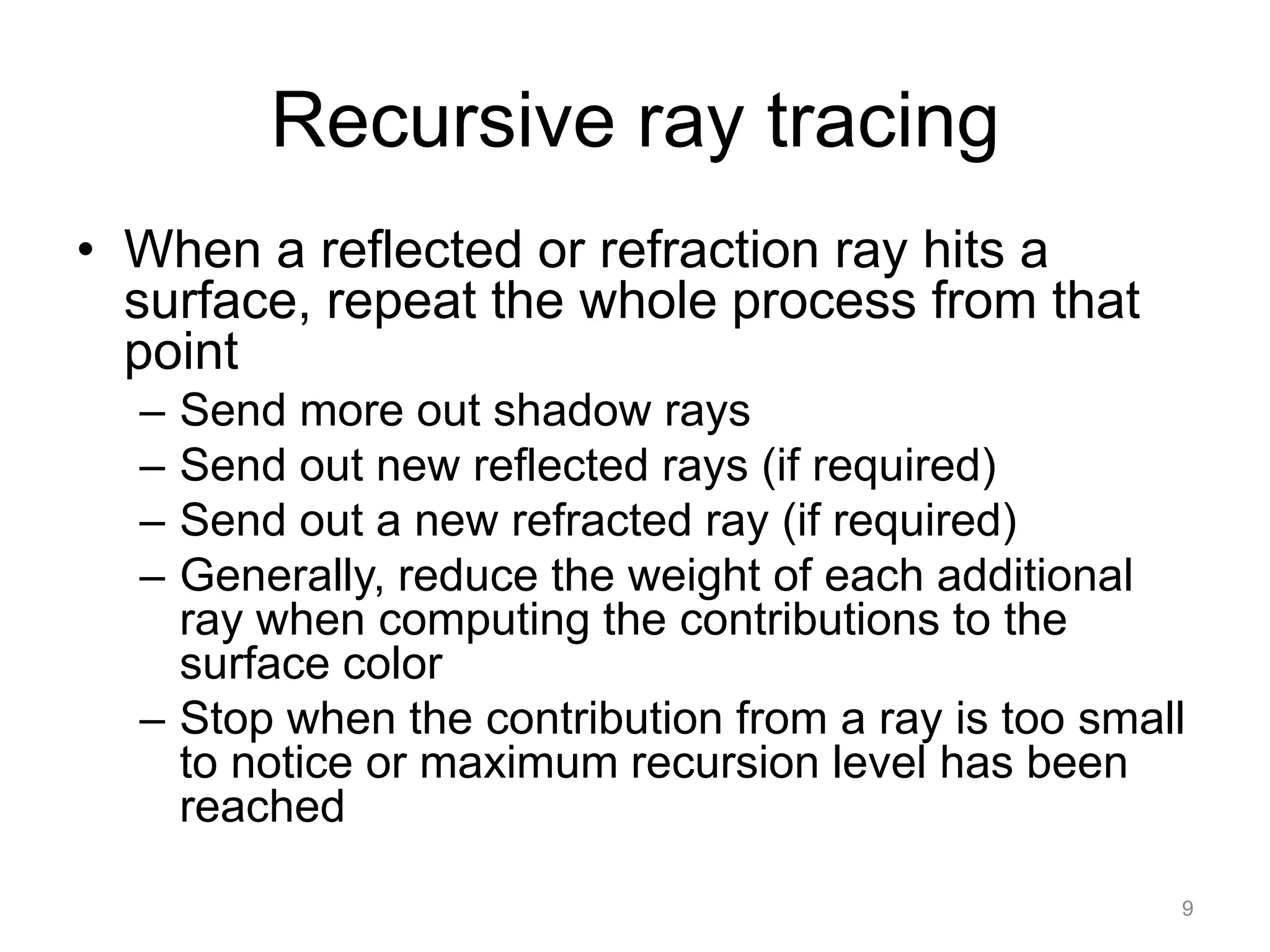
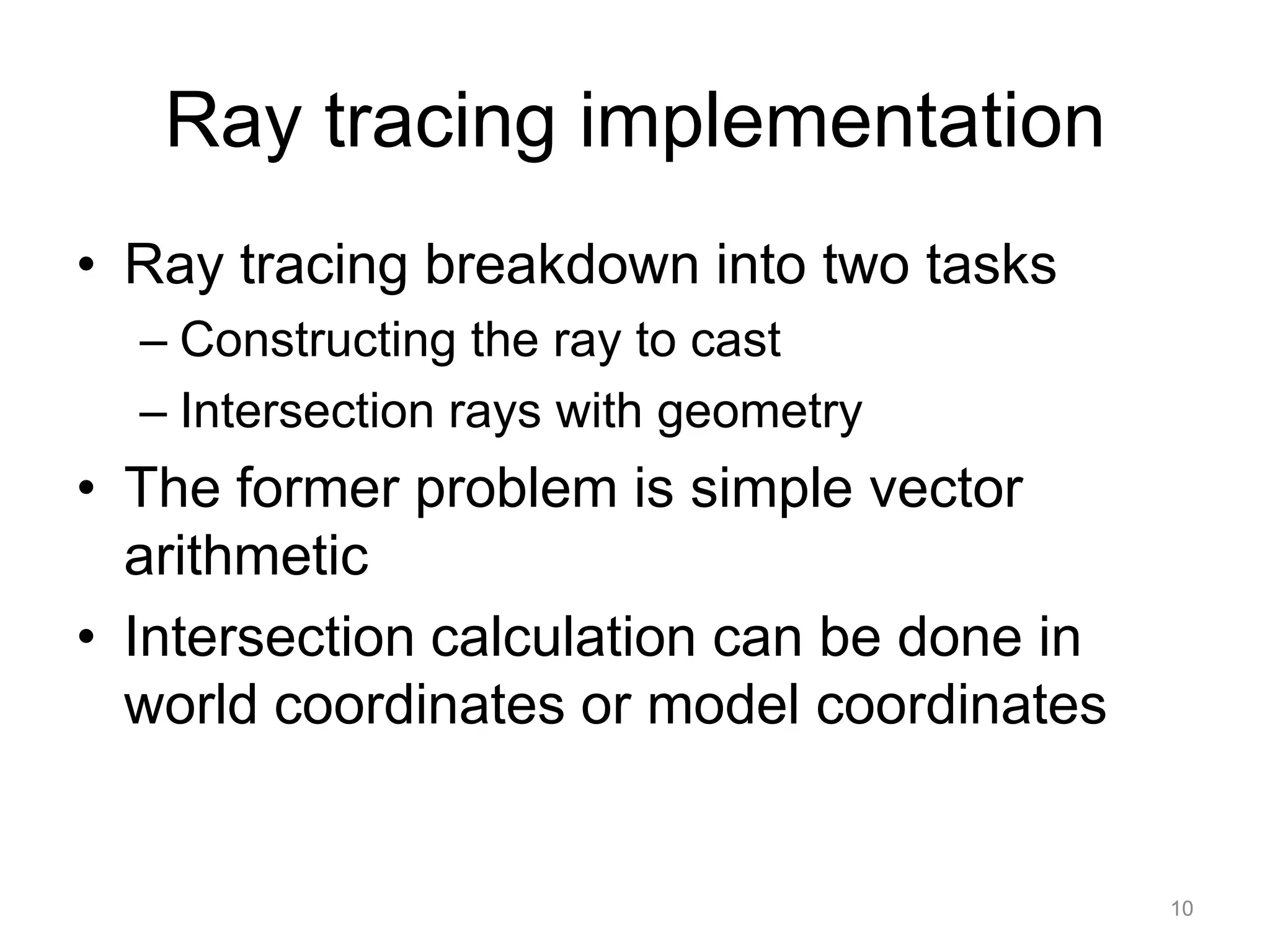
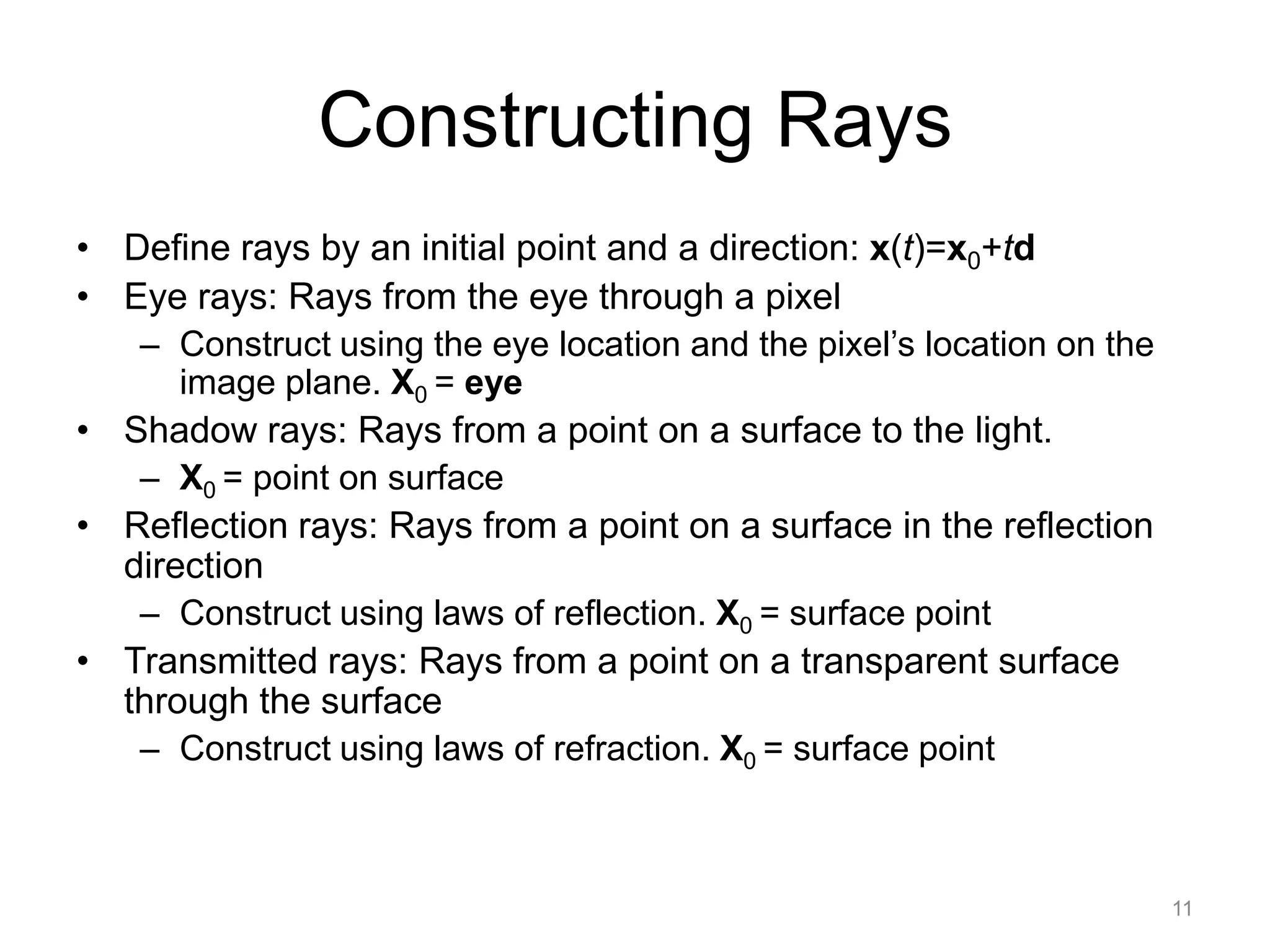
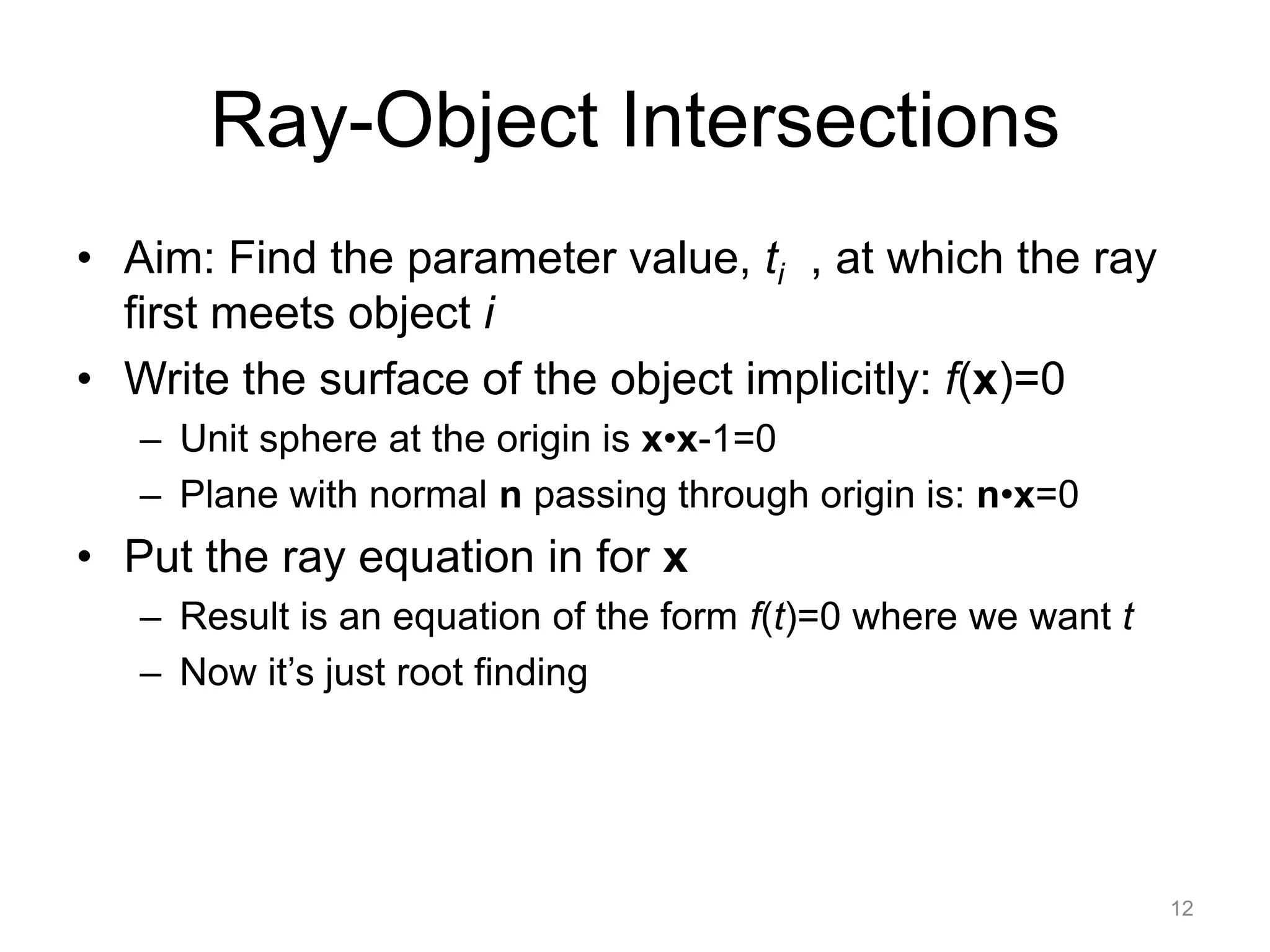
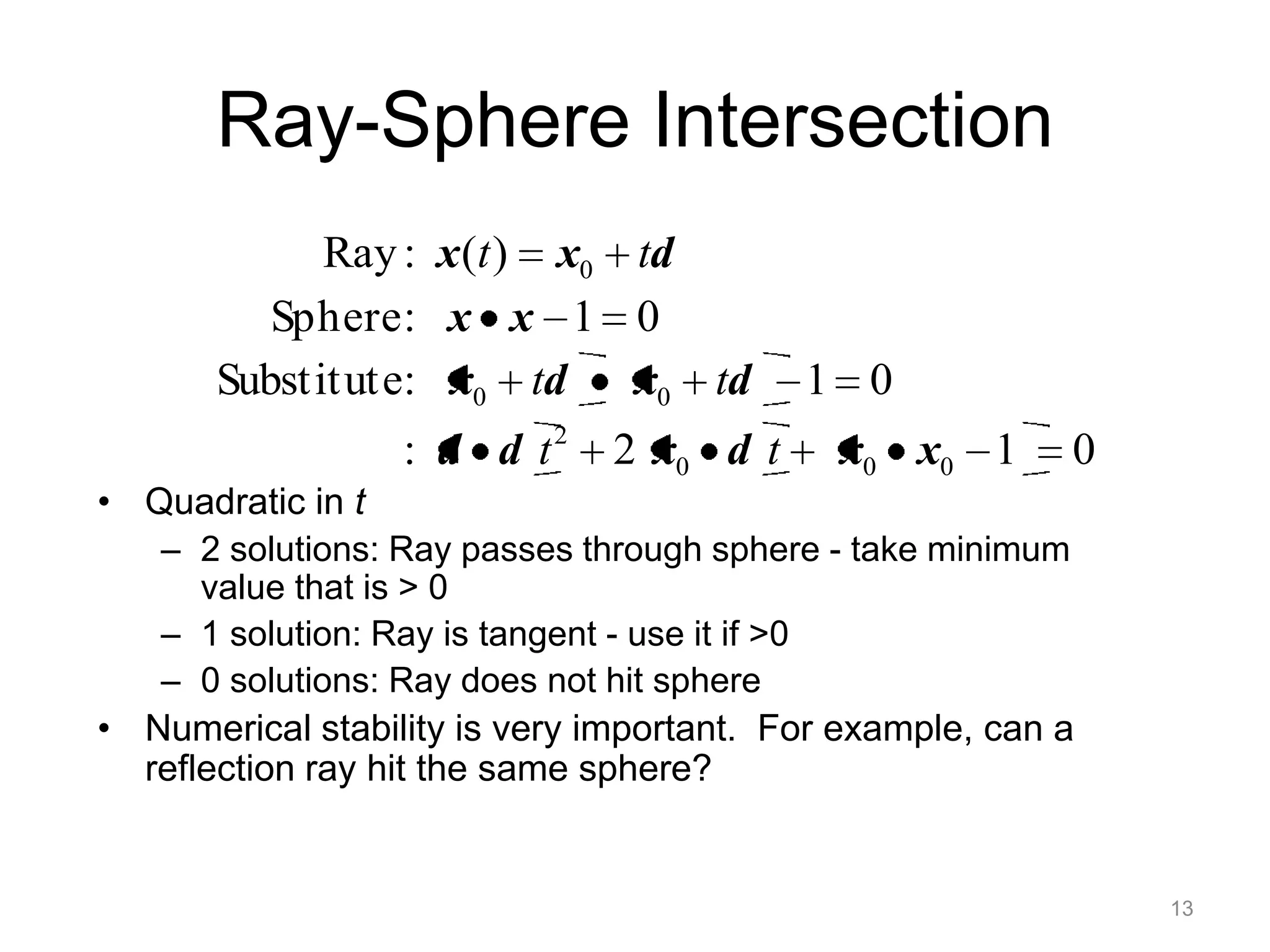
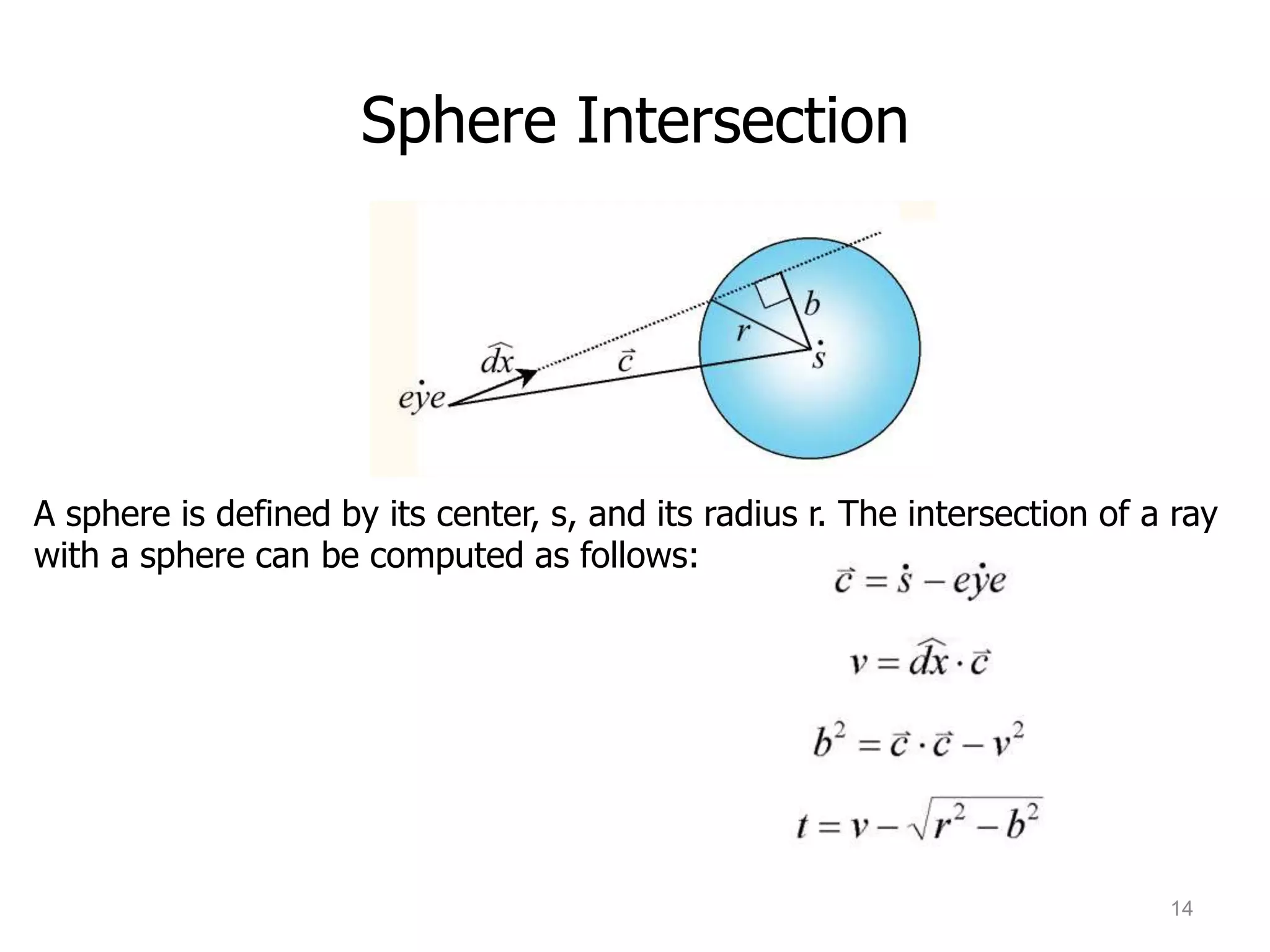
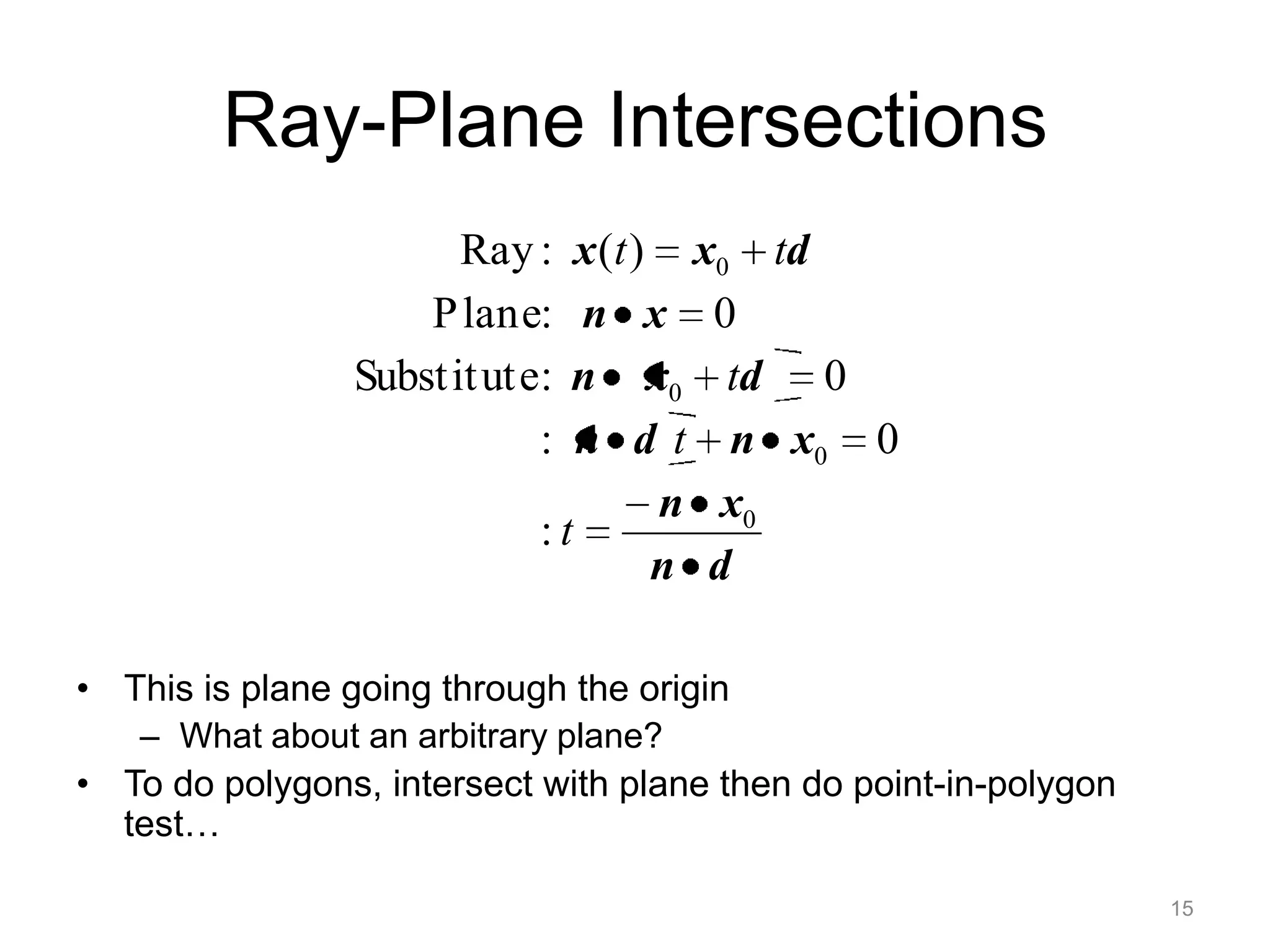
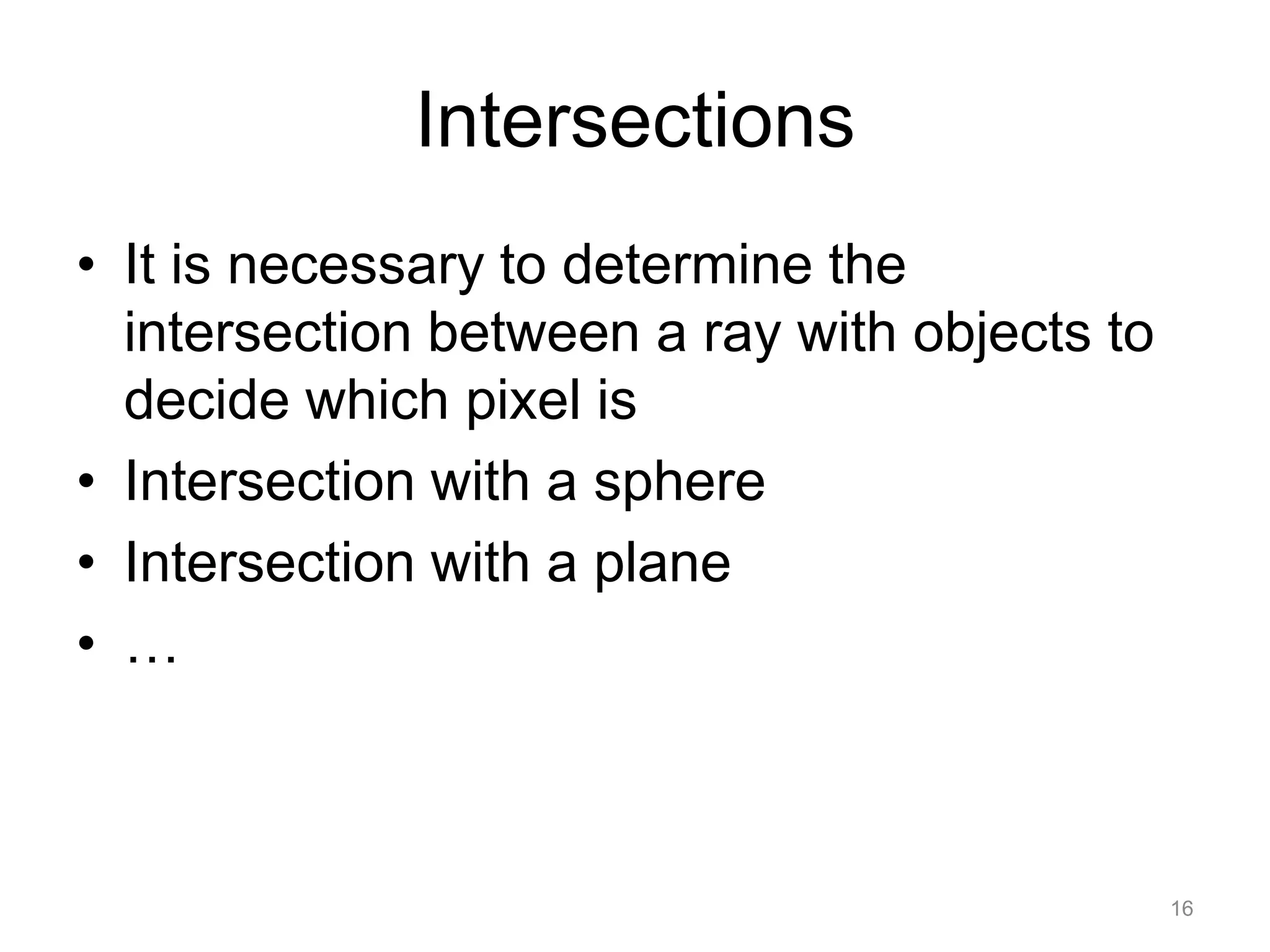

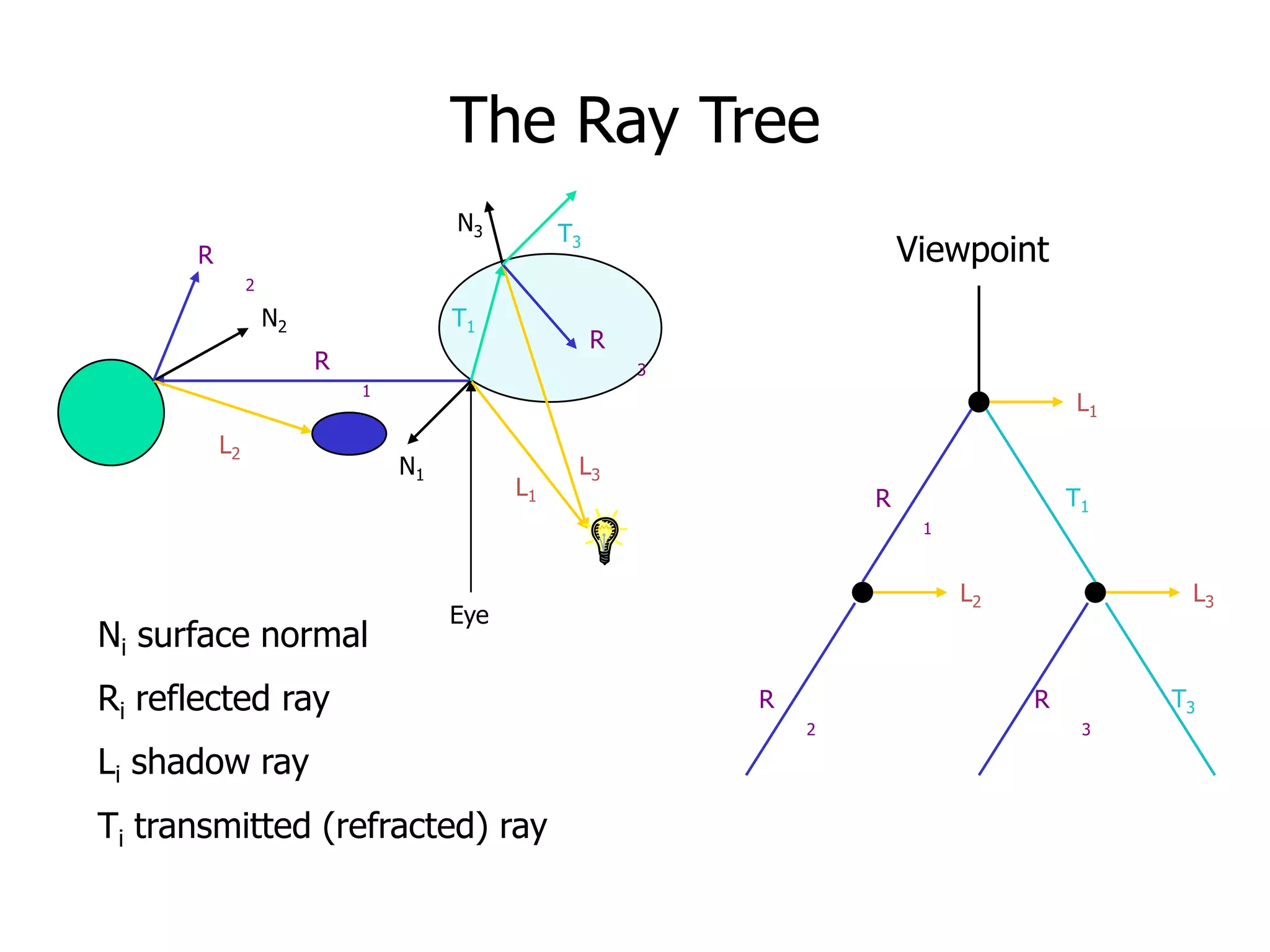
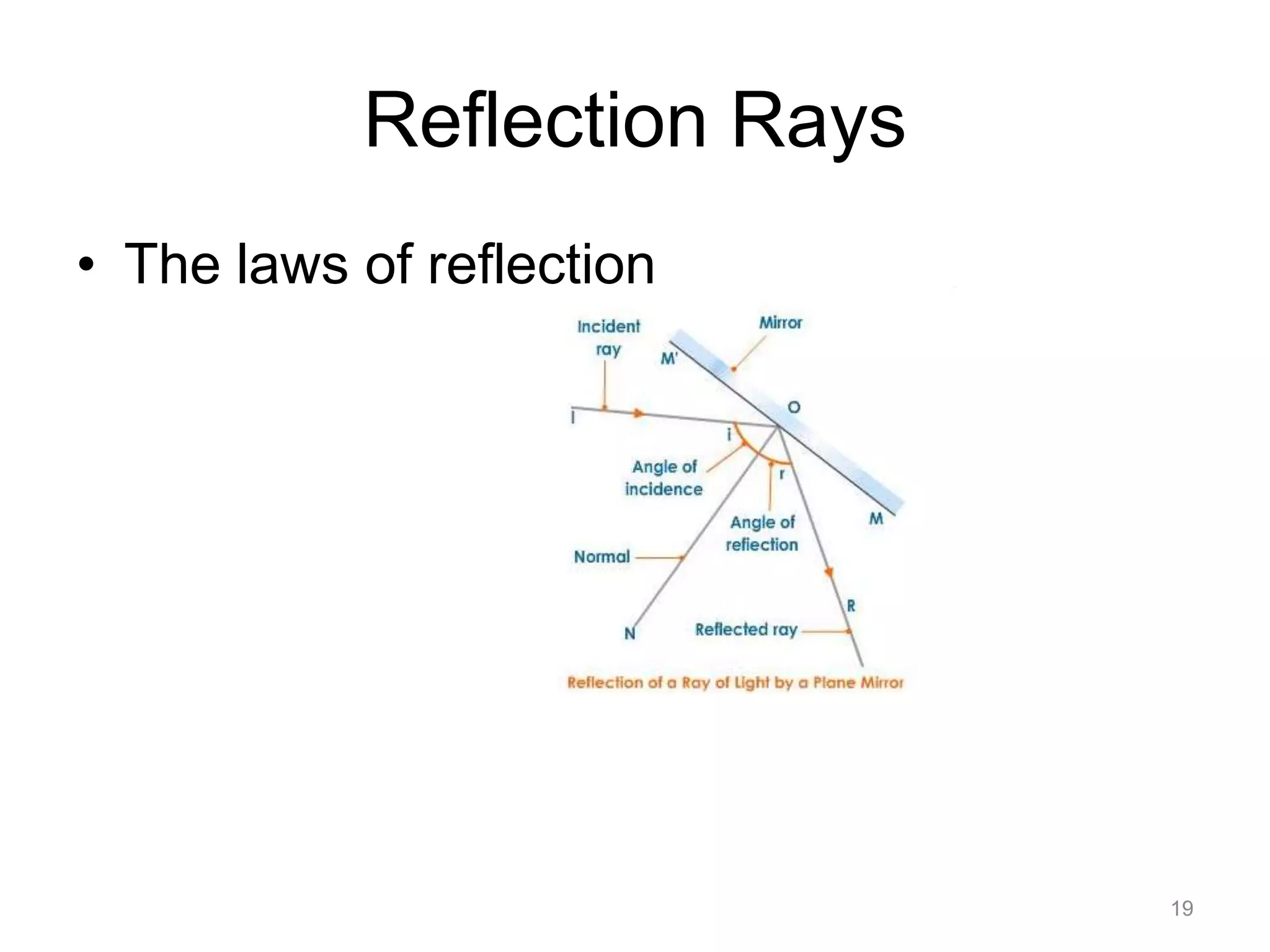
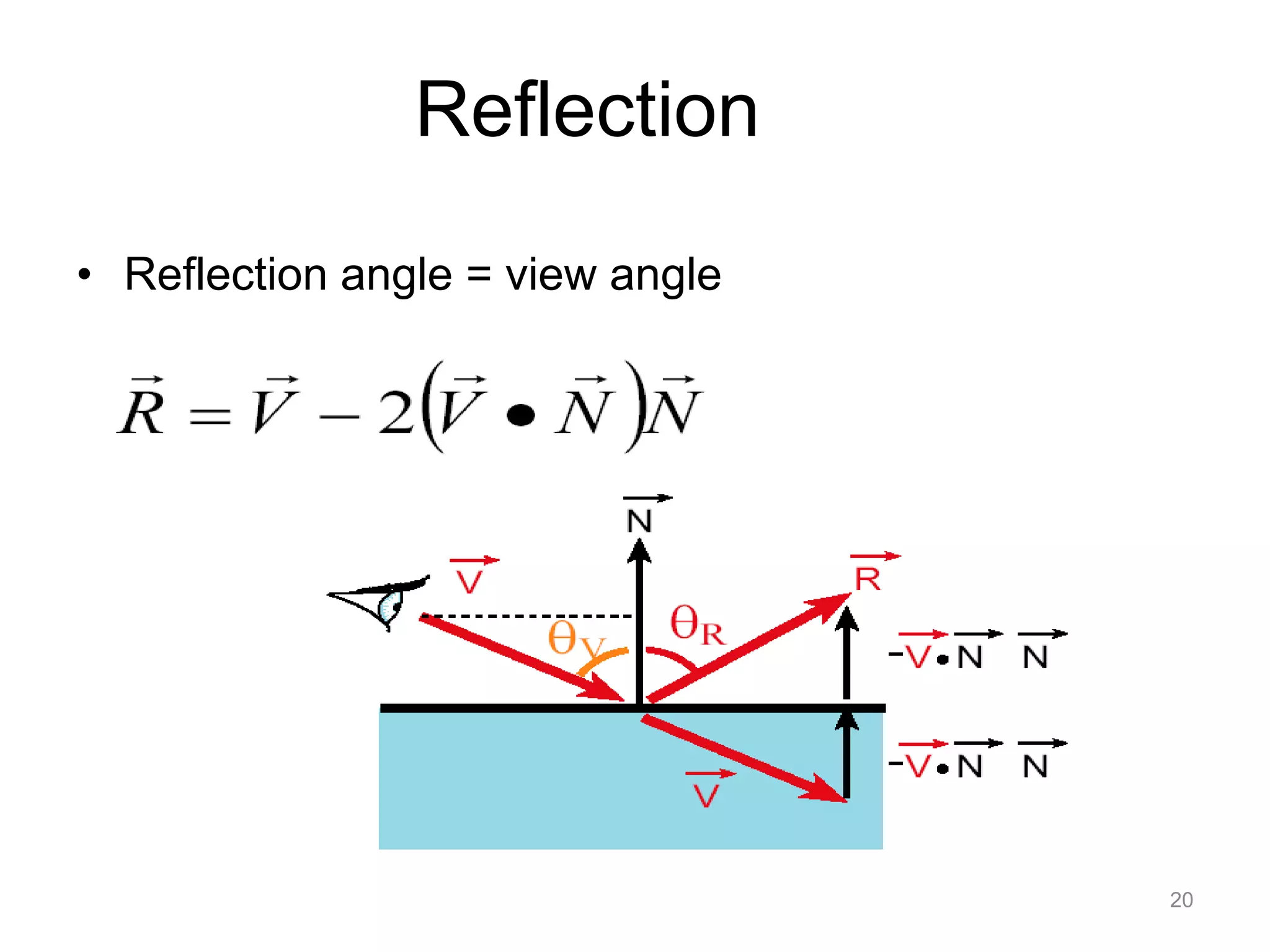
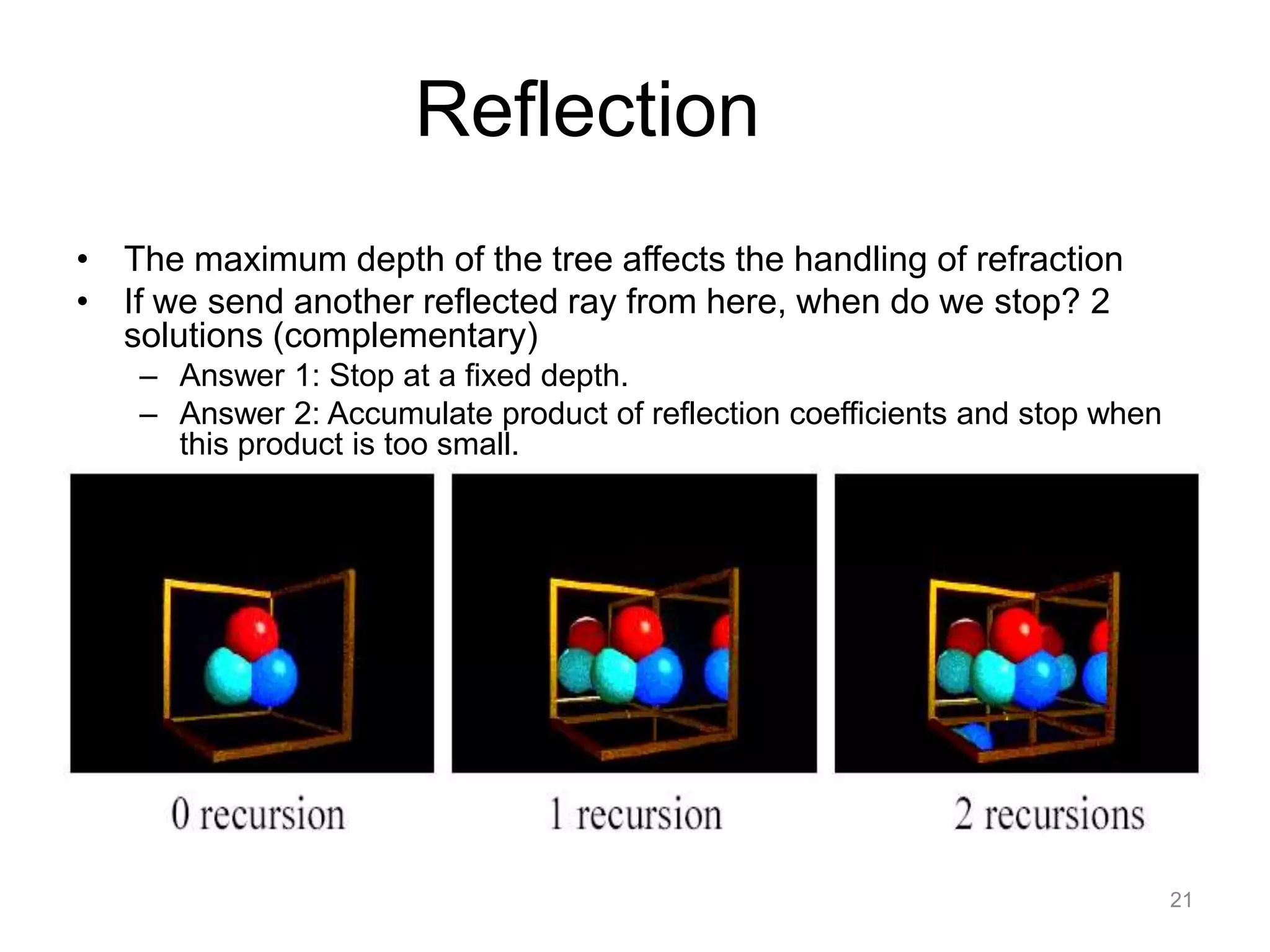
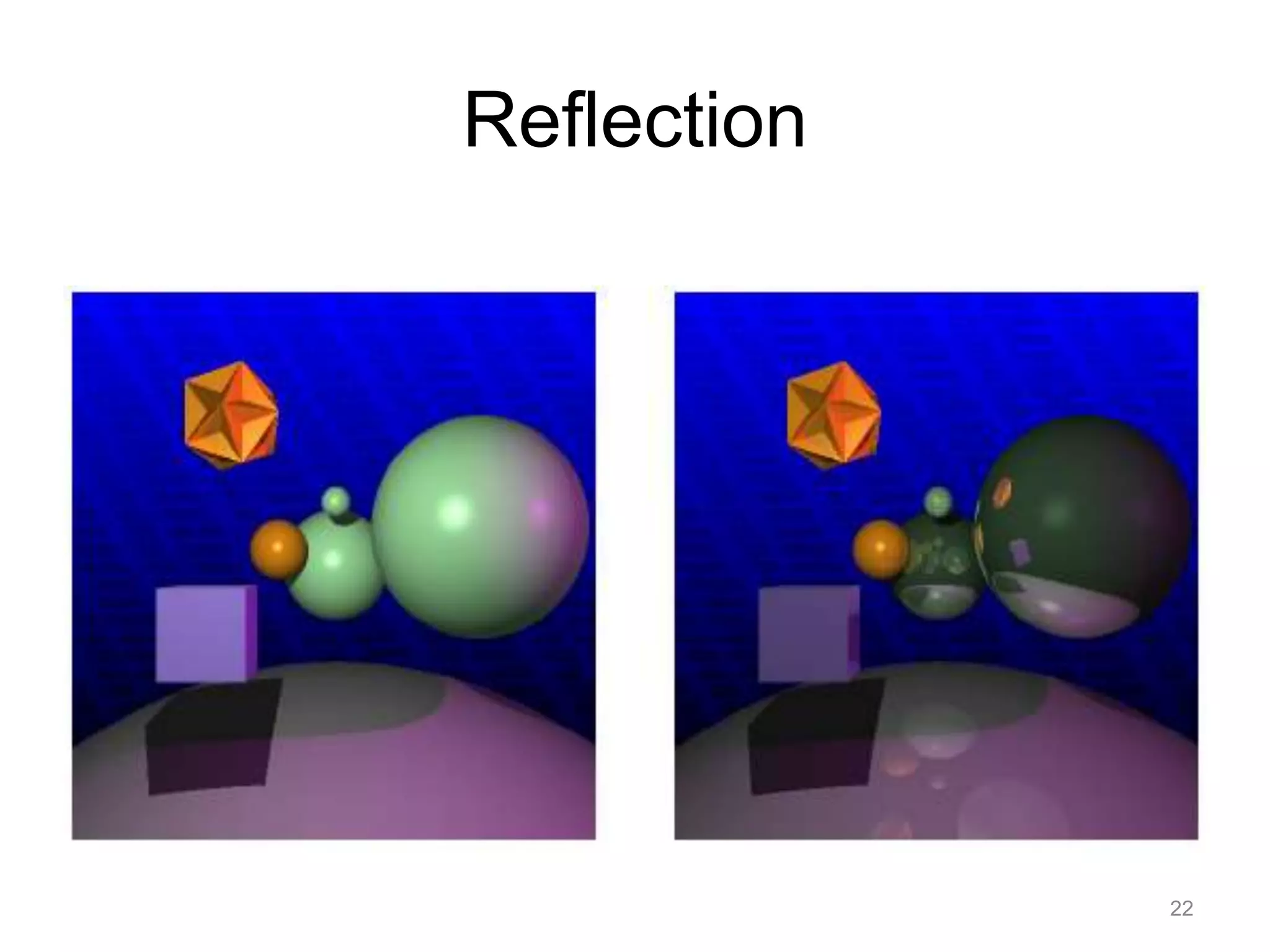
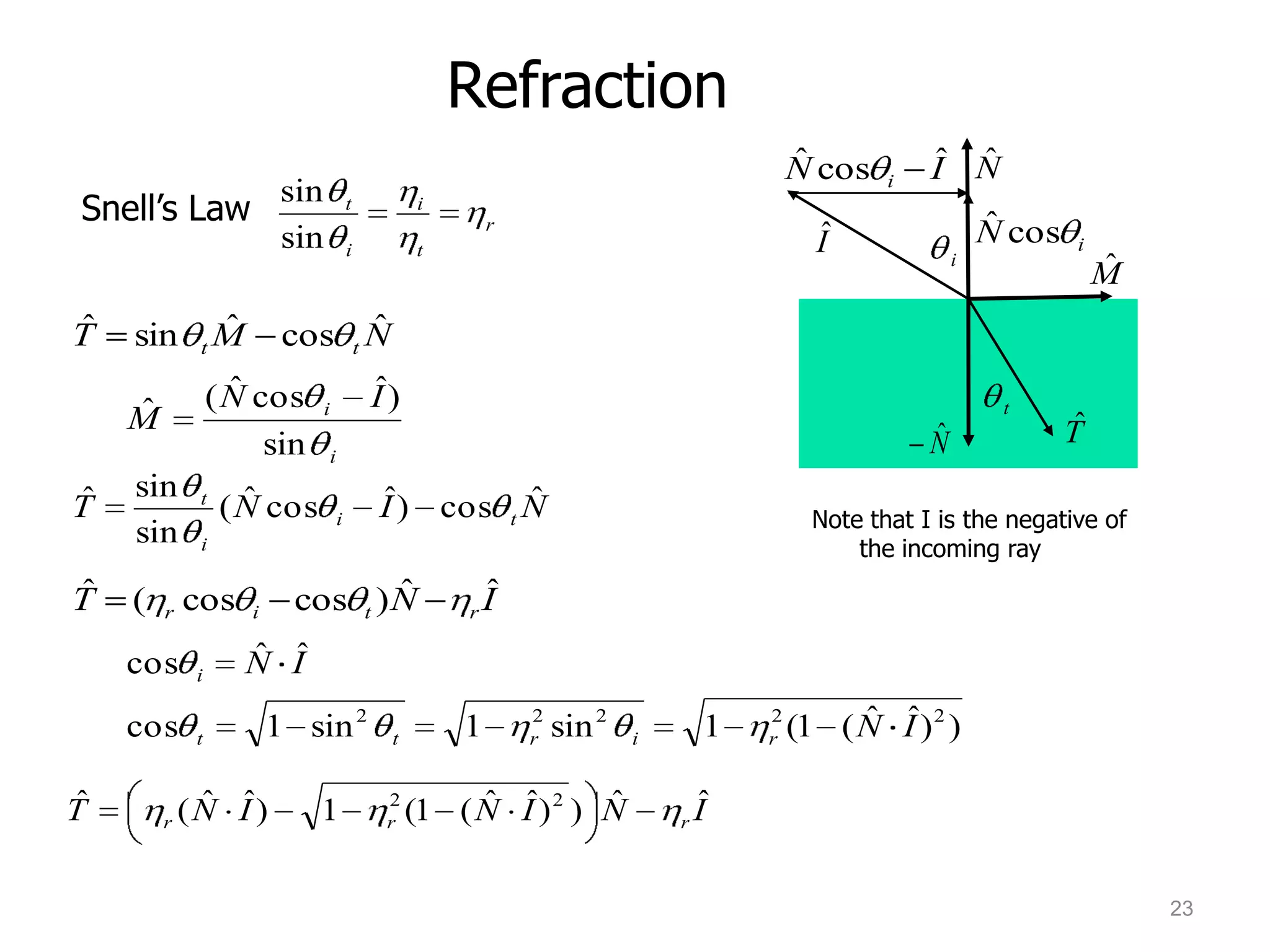
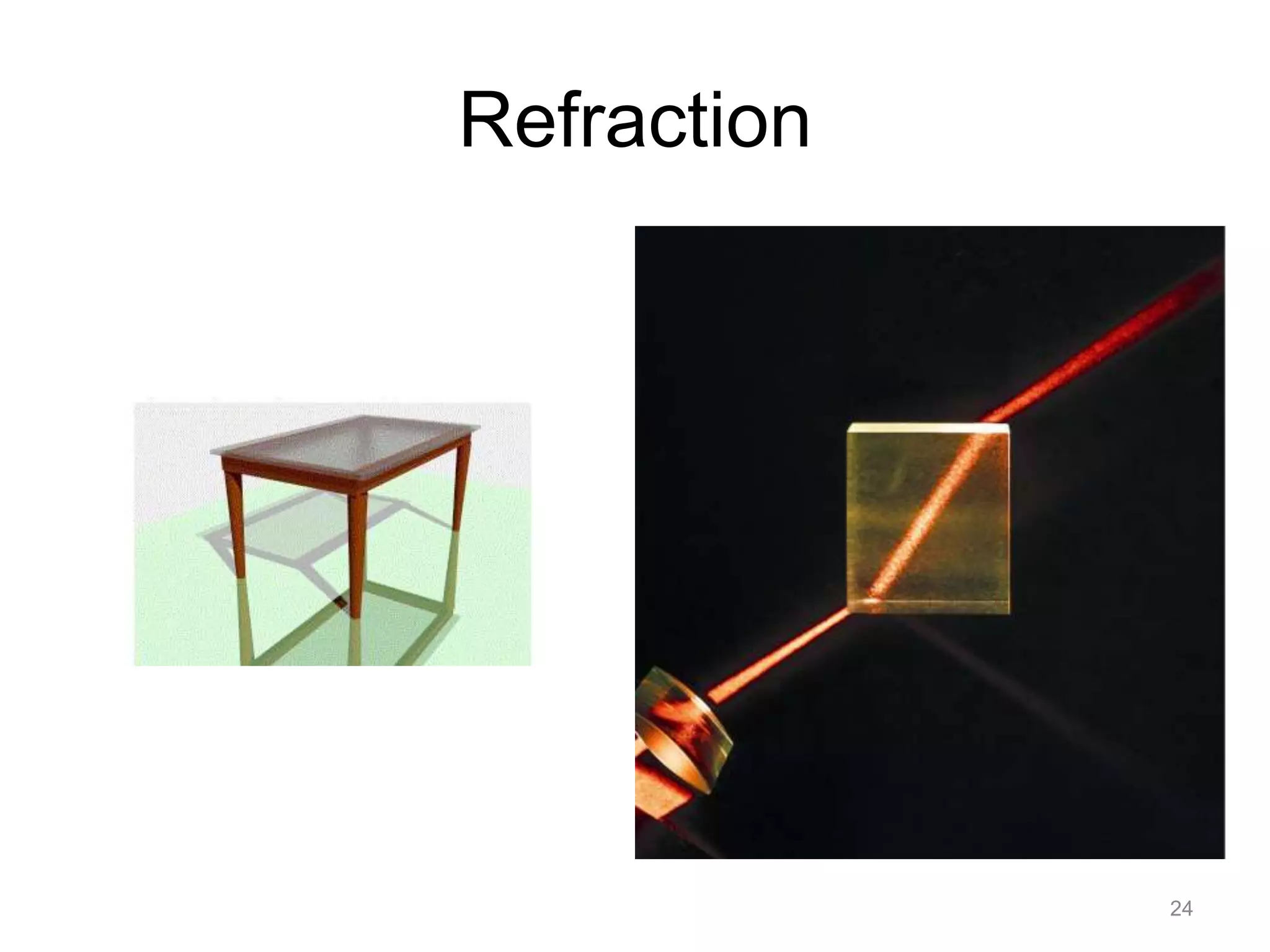
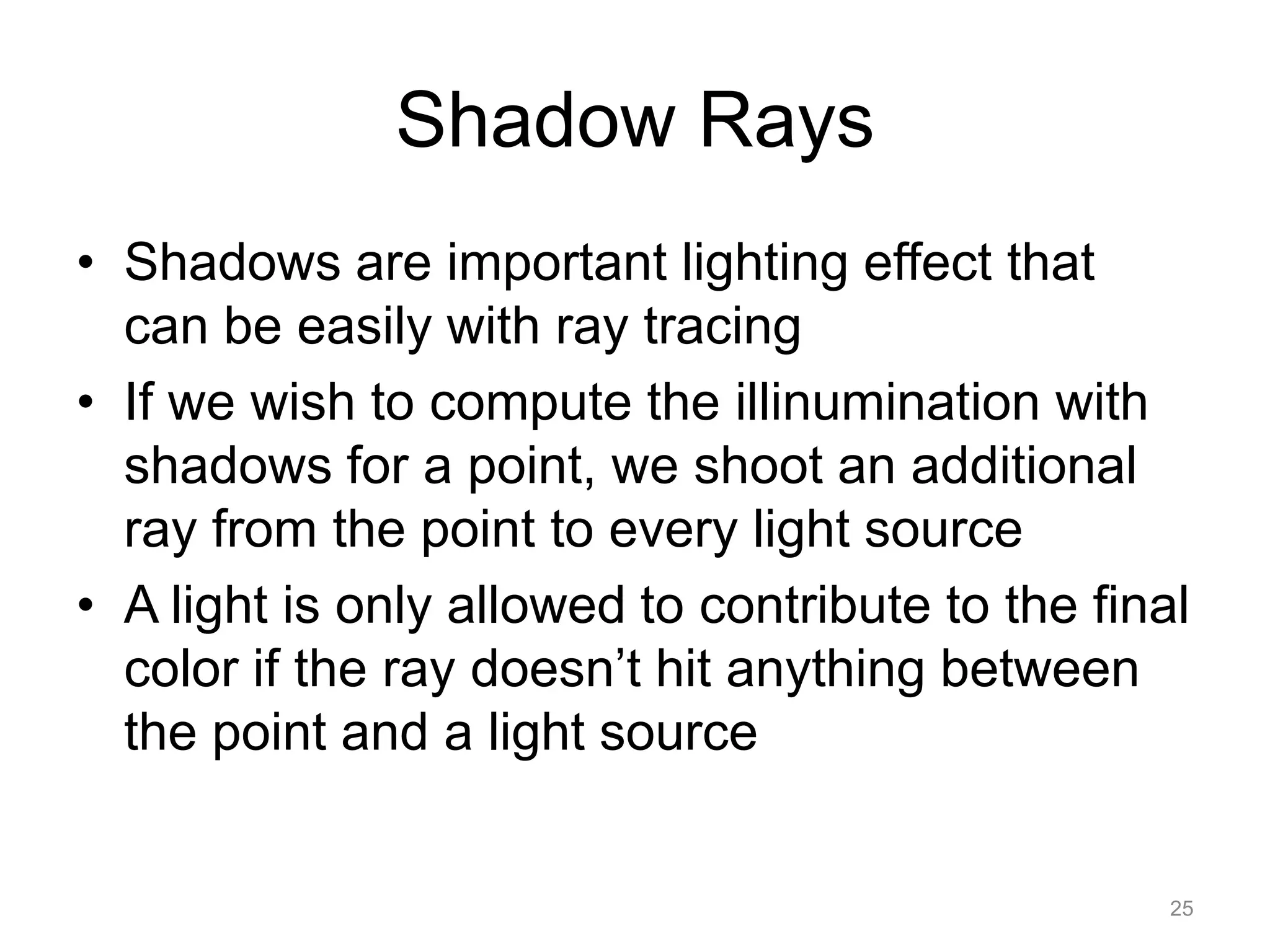
![Pseudo Code for Ray Tracing
rgb lsou; // intensity of light source
rgb back; // background intensity
rgb ambi; // ambient light intensity
Vector L // vector pointing to light source
Vector N // surface normal
Object objects [n] //list of n objects in scene
float Ks [n] // specular reflectivity factor for each object
float Kr [n] // refractivity index for each object
float Kd [n] // diffuse reflectivity factor for each object
Ray r;
void raytrace() {
for (each pixel P of projection viewport in raster order) {
r = ray emanating from viewer through P
int depth = 1; // depth of ray tree consisting of multiple paths
the pixel color at P = intensity(r, depth)
}
}
26](https://image.slidesharecdn.com/raytracing-111026083006-phpapp01/75/Ray-tracing-26-2048.jpg)
![rgb intensity (Ray r, int depth) {
Ray flec, frac;
rgb spec, refr, dull, intensity;
if (depth >= 5) intensity = back;
else {
find the closest intersection of r with all objects in scene
if (no intersection) {
intensity =back;
} else {
Take closest intersection which is object[j]
compute normal N at the intersection point
if (Ks[j] >0) { // non-zero specular reflectivity
compute reflection ray flec;
refl = Ks[j]*intensity(flec, depth+1);
} else refl =0;
if (Kr[j]>0) { // non-zero refractivity
compute refraction ray frac;
refr = Kr[j]*intensity(frac, depth+1);
} else refr =0;
check for shadow;
if (shadow) direct = Kd[j]*ambi
else direct = Phong illumination computation;
intensity = direct + refl +refr;
} }
return intensity; }
27](https://image.slidesharecdn.com/raytracing-111026083006-phpapp01/75/Ray-tracing-27-2048.jpg)
